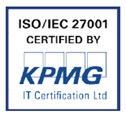Transformation of the European Patent Litigation Landscape - Here Comes the UPC
8 February 2022
Author: Vilhelm Schröder
The Long and Winding Road
The first attempts to create a unitary patent resulted in the Community Patent Convention (CPC) in 1975. But the CPC was not ratified by all the contracting states. The CPC was superseded by the Agreement Relating to Community Patents in 1989 and proposals for regulations on a community patent. When skepticism arose in relation to the above proposals and concerns related to litigation increased, the European Patent Litigation Agreement (EPLA) was drafted in 2004. In 2009, there was a Draft Agreement on European and Community Patents Court (EEUPCA). Nevertheless, for different reasons, none of the above efforts and proposals led to a successful introduction of a new system for a unitary patent in Europe.
After decades of failed attempts and many hurdles overcome along the way, Europe is now approaching the finish line in its attempt to create a system for patents with unitary effect and a Unified Patent Court (UPC). The UPC and the unitary patent could be considered the most significant change in the European patent landscape since the signing of the European Patent Convention in 1973.
The proposed new patent system can be divided into two main blocks: (1) the Unitary Patent Regulations (establishing patents with unitary effect) and (2) the UPC Agreement (UPCA) (establishing the Unified Patent Court (UPC)). The two blocks are closely linked to each other.
With the UPC, the patent litigation landscape will change significantly in Europe. As its predecessors, the UPC system has also faced many challenges. In 2015, the Kingdom of Spain brought actions to render the Unitary Patent Regulations illegal before the Court of Justice of the European Union (CJEU). These claims were rejected by the CJEU. Furthermore, as a consequence of “Brexit”, the United Kingdom (UK) is no longer a member of the EU, and it has become clear that the UK will not participate in the new system. This caused some uncertainty in relation to the UPC system inter alia due to the wording of the UPCA. The most recent obstacle was that the implementation of the agreement was challenged before the German Constitutional Court (twice). However, in its most recent judgments, the Constitutional Court rejected the preliminary injunction applications and paved the way for moving forward with the UPC.
Here Comes the UPC — What Will Change?
For the preparations to set up the UPC to officially begin, it was required that a sufficient number of the Member States ratify the so-called Protocol on the Provisional Application of UPC Agreement (PAP Protocol). After Austria had deposited its ratification instrument related to the PAP Protocol, it was officially announced that the provisional application could begin on 19 January 2022. This also meant that the UPC was “born” as an international organisation. The entry into force of the PAP Protocol will entail that the provisional application of the UPCA can start, which means that certain provisions of the UPCA, which do not directly relate to the court’s activities in using its judiciary power as a court, can be applied. The recruitment of judges will also be finalised during the preparatory phase.
The most significant change that the UPC will bring is that infringement and nullity rulings will have a pan-European effect. Currently, infringement and nullity actions must be initiated in each individual state where protection is sought, since European patents are “bundles” of national patents. The UPC will have a Court of First Instance which contains local, regional, and central divisions as well as a Court of Appeal which will have its seat in Luxembourg.
The UPCA enters into force four months after thirteen Member States have ratified and deposited the agreement, including the three Member States with the highest number of European patents. The UPCA has now been ratified by the required Member States. Germany has however not yet deposited its ratification instrument, which means that the UPCA has not yet entered into force. Germany will deposit the ratification instrument once it is foreseeable that the court could actually be up and running within four months of the deposition.
The EPO Takes a Head Start
The Unitary Patent Regulations will become applicable when the UPCA enters into force. The new patent system will allow a patent applicant to request for pan-European effect for the patent with a single request to the European Patent Office (EPO).
In order to facilitate the introduction of the unitary patent system, the EPO recently informed that it will accept requests for unitary effect even prior to the date of application of the Unitary Patent Regulations. It should be noted that early requests for unitary effect will be accepted only after Germany has deposited its ratification instrument related to the UPCA. Furthermore, unitary effect can only be registered by the EPO for any European patent granted on or after the application of the Unitary Patent Regulation No. 1257/2012.
The UPC Up and Running Soon?
If the UPC preparations progress as planned, it could be expected that Germany deposits its ratification instrument of the UPCA some time in spring or summer this year. The UPCA will officially enter into force four months after the deposit. It has been predicted that the UPC could start its operations already later this year or in the beginning of 2023.
Finally, it should be noted that there will be a transitional period of seven years during which infringement or nullity actions related to a European patent may still be brought before national courts. A holder of a European patent is also allowed to opt out the competence of the UPC as long as this is done before an action is pending before the UPC and at least one month before the expiry of the transitional period.
We are living in exciting times. Anyone involved with patents or patent litigation in Europe will be closely monitoring how the preparations and set up of the UPC unfolds.






